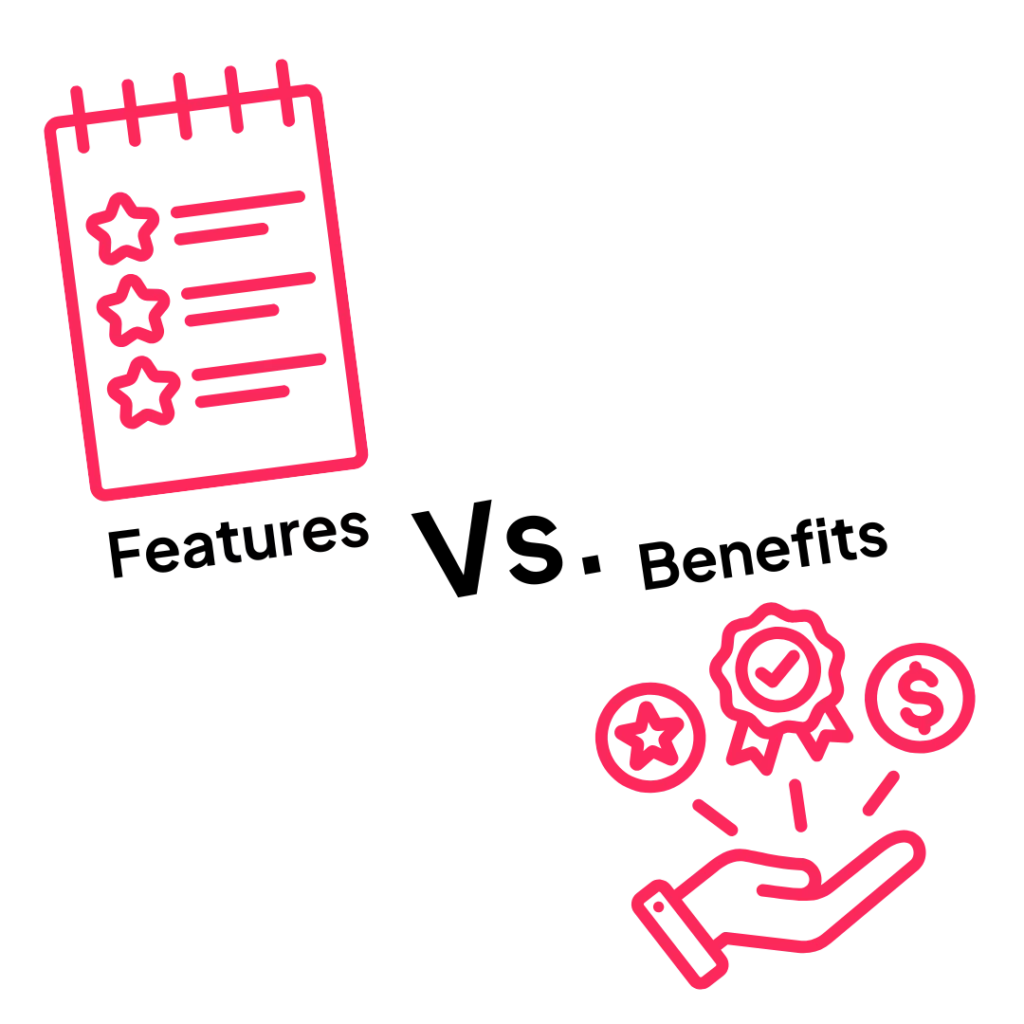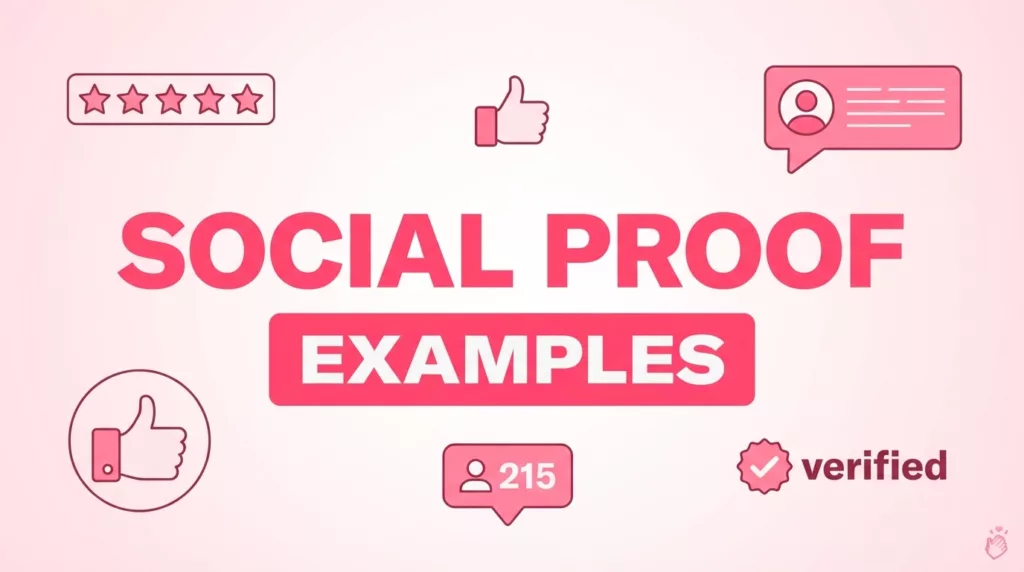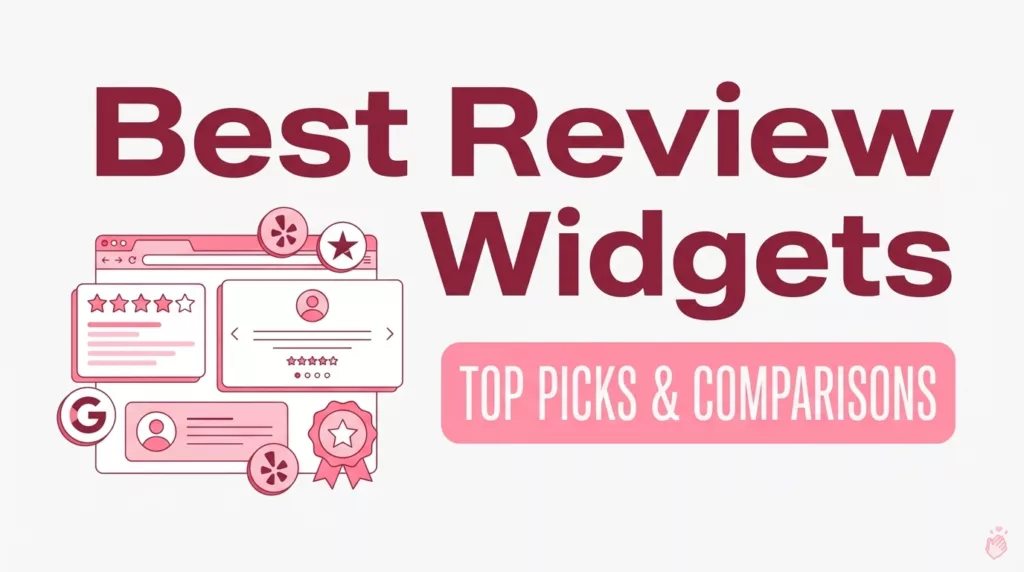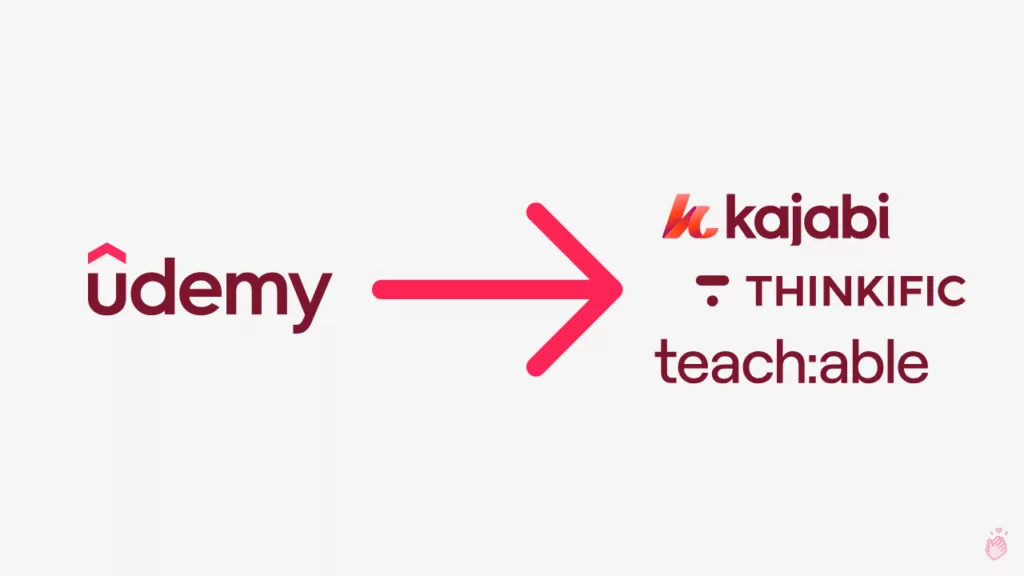
Features vs Benefits: What’s the Real Difference?
Features and benefits are not the same—and knowing the difference is the key to effective marketing.
Features describe what a product is or what it does—its characteristics, specifications, or technical details.
Benefits explain why those features matter—how they make life better, easier, or more enjoyable for the customer.
In a nutshell:
Features are the facts; benefits are the value.
Understanding this distinction helps brands connect with what customers actually care about—not just what a product does, but how it improves their lives.
Example
Feature:
A smartphone with a 12-megapixel camera.
Benefit:
Capture stunning, high-quality photos to preserve your cherished memories.
By translating features into real benefits, you transform technical details into compelling reasons to buy. In this guide, we’ll show you exactly how to do that—and why focusing on benefits drives more sales, trust, and loyalty.
- E-commerce businesses and digital marketers often focus on product features, but it’s the benefits — the “why” — that drive customer purchases. While features describe what a product does, benefits explain how it improves the customer’s life.
- By shifting the focus to benefits, businesses can tap into emotional triggers like convenience, security, and confidence to boost conversions.
- Use the 3-step “Feature → So What? → Benefit” method to highlight benefits in product descriptions. Avoid jargon, focus on emotional outcomes, and write benefit-driven copy that resonates with consumers.
- Train your team to adopt this approach, leverage customer feedback, and run A/B tests to refine your messaging. The bottom line: People don’t buy features; they buy better versions of themselves.
Why Benefits Drive Consumer Behavior
When making purchasing decisions, customers are guided by emotions and psychological factors.
Features describe the physical or technical aspects of a product, while benefits explain how those features add value from the customer’s perspective.
Customers are not necessarily interested in every feature; instead, they want to understand how a product’s features will benefit them.
People look for products that simplify their lives, enhance their safety, and improve their overall well-being.
When customers see how a product can positively impact their lives, they are far more likely to make a purchase.
Key Psychological Triggers:
- Emotional Connection: Benefits that resonate emotionally can create a strong bond between the customer and the product.
- Problem-Solving: Demonstrating how a product solves a specific problem can make it more appealing.
- Value Proposition: Clearly stating the benefits helps customers perceive the value, justifying the purchase.
Transforming Features into Compelling Benefits
To effectively communicate benefits, follow this three-step process:
- Identify the Feature: Start by listing the product’s features.
- Ask “So What?”: Determine the importance of each feature to the customer.
- Highlight the Benefit: Explain how the feature improves the customer’s life or solves a problem.
Example:
- Feature: Laptop with a 10-hour battery life.
- So What?: Allows for extended use without frequent charging.
- Benefit: Work and play all day without interruption, enhancing productivity and entertainment experiences.
By consistently applying this method, you can craft product descriptions that are both informative and persuasive.
Real-World Examples of Benefit-Focused Marketing
Leading brands effectively emphasize benefits to connect with their audience:
- Apple: Instead of merely stating technical specifications, Apple highlights how features enhance user experiences, such as “FaceTime HD Camera for stunning video calls.”
- Nike: Promotes products by focusing on the benefits of performance and comfort, inspiring customers to “Run faster, jump higher.”
- Casper: Markets their mattresses by emphasizing better sleep quality, leading to improved health and well-being.
These examples demonstrate how focusing on benefits can create a more compelling narrative that resonates with consumers.
Crafting Benefit-Oriented Product Descriptions
To write product descriptions that convert, consider the following tips:
- Use Sensory Language: Engage the customer’s senses to create a vivid image of the product experience.
- Incorporate Storytelling: Tell a story that places the customer in a scenario where the product enhances their life.
- Be Specific: Avoid vague statements; provide concrete benefits that address specific customer needs.
- Use Bullet Points: List key benefits in bullet points for easy readability and to highlight important information.
Example:
- Product: Noise-Cancelling Headphones
- Description: Immerse yourself in pure sound with our noise-cancelling headphones.
- Benefit 1: Eliminate background noise for a focused listening experience.
- Benefit 2: Enjoy long-lasting comfort with plush ear cushions.
- Benefit 3: Experience wireless freedom with Bluetooth connectivity.
This approach ensures that the customer understands not just what the product is, but how it will enhance their life.
Avoiding Common Pitfalls
When emphasizing benefits, be cautious of these common mistakes:
- Overloading with Features: Listing too many features without explaining their relevance can overwhelm customers.
- Using Jargon: Technical language can alienate customers; use simple, relatable terms.
- Making Unsubstantiated Claims: Ensure that all stated benefits are accurate and can be backed up.
By avoiding these pitfalls, your product descriptions will be more effective and trustworthy.
Simplifying Complex Concepts for Your Team
As a digital marketing manager, it’s essential to communicate the importance of benefit-focused marketing to your team. Consider the following strategies:
- Training Sessions: Conduct workshops that teach the difference between features and benefits, using real-world examples.
- Create Guidelines: Develop a style guide that emphasizes benefit-oriented language.
- Use Templates: Provide templates that help team members consistently highlight benefits in their copy.
These practices ensure that your entire team understands and applies benefit-focused marketing principles effectively.
Leveraging Data to Highlight Benefits
Utilize customer data to identify which benefits resonate most with your audience:
- Customer Reviews: Analyze reviews to understand what customers value about your product.
- Surveys: Conduct surveys to gather insights into customer needs and preferences.
- A/B Testing: Test different benefit-focused messages to see which ones drive higher conversions.
By leveraging data, you can tailor your messaging to emphasize the benefits that matter most to your customers.
Here’s a quick recap of the key takeaways from this article:
Key Takeaways
Features tell the “what,” but benefits reveal the “why.”
Features describe the product’s specifications, while benefits highlight the life-improving results for the customer. This shift in focus is crucial for e-commerce brands aiming to increase conversions.
Benefits tap into consumer psychology.
Emotional triggers like convenience, safety, and confidence play a major role in consumer decision-making. Benefits connect to these emotions, making your product feel more relevant and valuable.
Use the 3-step transformation method: Feature → So What? → Benefit.
For every feature, ask, “So what?” three times. This will help you identify the emotional outcome, which should be your benefit.
Make product descriptions benefit-focused.
Use vivid sensory language, storytelling, and bullet points to showcase benefits clearly and concisely. Replace generic phrases like “state-of-the-art technology” with outcome-focused benefits like “achieve faster uploads and seamless browsing.”
Avoid common mistakes.
Don’t overload descriptions with technical jargon, unproven claims, or excessive features. Every statement should contribute to the emotional appeal of your product.
Use team-wide frameworks to reinforce the feature-to-benefit shift.
Digital marketing managers can simplify complex concepts for their teams by using templates, checklists, and consistent training sessions on benefit-driven messaging.
Data is your best ally.
Reviews, surveys, and A/B testing can uncover the benefits that matter most to your target audience. Use this data to refine your product descriptions and marketing messages.
Your Next Steps: Turn Features Into Benefits That Sell
If you want to improve your e-commerce conversion rates, start focusing on why your product matters, not just what it does. Here’s a simple action plan for you and your team to start right away:
- Audit Your Product Pages: Identify where you’re focusing on features instead of benefits. Use the “So what?” method to turn them into benefit-driven statements.
- Build a Feature-to-Benefit Table: List out your product’s features, answer “So what?” three times, and turn the final answer into a benefit-driven statement.
- Write New Product Descriptions: Rewrite at least 3 product descriptions on your site today, focusing on the emotional benefits your customers will receive.
- Test & Iterate: Run A/B tests on benefit-focused product descriptions vs. feature-heavy descriptions. Measure conversions, click-through rates, and time on page.
- Train Your Team: Use this article as a guide to train your team on the importance of benefit-driven copywriting.
Bonus Tools & Resources
Here are some tools to help you master benefit-driven messaging and product descriptions:
Copywriting Generators: Use tools like Copy.ai or Jasper to turn features into customer-facing benefits.
SEO Research Tools: SEMrush and Ahrefs can help identify high-converting benefit-related keywords.
Split Testing Software: Tools like Optimizely or VWO help you A/B test descriptions to see which ones convert better.
Customer Feedback Tools: Use Surveys and Review Platforms to collect insights on customer needs and pain points.
Frequently Asked Questions (FAQs)
What’s the simplest way to turn features into benefits?
The simplest way is to use the “Feature → So What? → Benefit” method. Write down the feature, ask “So what?” (what does it do for the customer?), and then keep asking “So what?” until you uncover a meaningful emotional outcome.
Example:
– Feature: Fast 2-day shipping
– So What? Products arrive quickly.
– So What? Customers get their product faster.
– Benefit: Experience instant gratification by receiving your order in just 2 days.
Can I still list features in my product descriptions?
Yes, but balance is key. Features should provide context, while benefits should take center stage. Lead with benefits first, then use features to back them up. For instance:
– Benefit: “Never miss a moment with long-lasting battery life.”
– Feature: “Equipped with a 12-hour rechargeable battery.”
How do I know which benefits will matter most to my customers?
Start by analyzing customer reviews, support tickets, and survey feedback. Look for recurring pain points, desires, and specific language customers use to describe what they love about your product. Use these insights to shape your benefit-driven copy.
Is it possible to highlight both features and benefits?
Yes, and this is often the most effective strategy. Position the benefit as the “headline” or bolded text, and use the feature as supporting evidence.
Example:
– Benefit: Capture memories like never before with ultra-clear image quality.
– Feature: Featuring a 24MP rear camera with image stabilization.
Final Words of Wisdom
Switching from feature-based messaging to benefit-driven marketing is a simple but highly effective way to improve your e-commerce store’s performance. When you lead with benefits, you focus on your customer’s desires and outcomes, which triggers emotional decision-making.
If you take one thing away from this article, remember this:
People don’t buy features. They buy the promise of a better version of themselves.
Your job as an e-commerce business owner or marketing manager is to show them how your product will improve their life.
Now it’s your turn. Turn your features into benefits, and watch your conversions grow.




